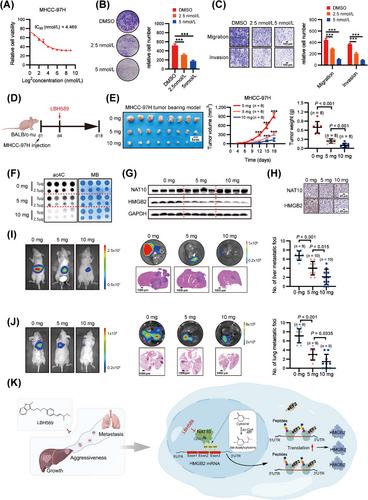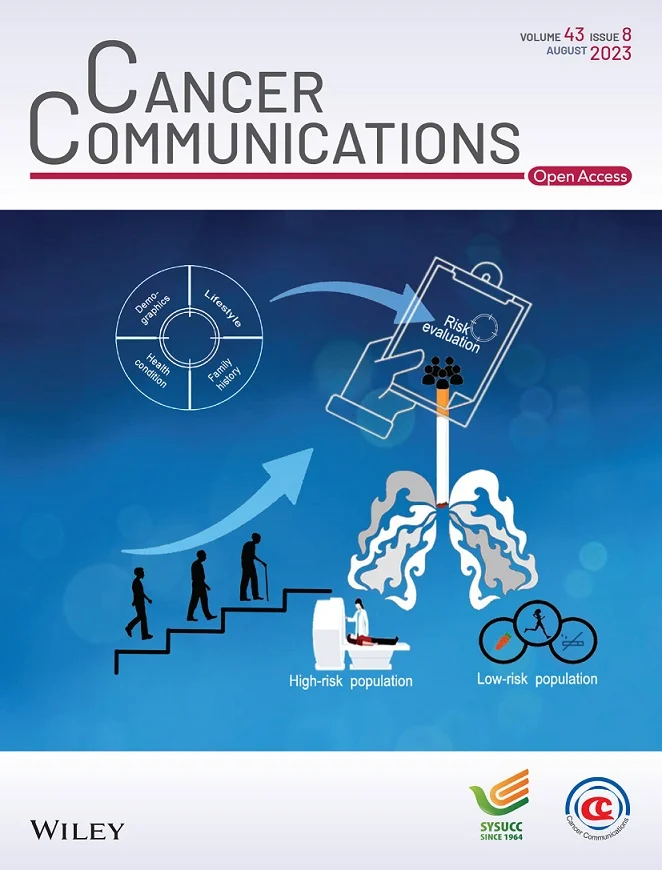Targeting N4-acetylcytidine suppresses hepatocellular carcinoma progression by repressing eEF2-mediated HMGB2 mRNA translation
Abstract
Background
N4-acetylcytidine (ac4C) represents a novel messenger RNA (mRNA) modification, and its associated acetyltransferase N-acetyltransferase 10 (NAT10) plays a crucial role in the initiation and progression of tumors by regulating mRNA functionality. However, its role in hepatocellular carcinoma (HCC) development and prognosis is largely unknown. This study aimed to elucidate the role of NAT10-mediated ac4C in HCC progression and provide a promising therapeutic approach.
Methods
The ac4C levels were evaluated by dot blot and ultra-performance liquid chromatography-tandem mass spectrometry with harvested HCC tissues. The expression of NAT10 was investigated using quantitative real-time polymerase chain reaction, western blotting, and immunohistochemical staining across 91 cohorts of HCC patients. To explore the underlying mechanisms of NAT10-ac4C in HCC, we employed a comprehensive approach integrating acetylated RNA immunoprecipitation and sequencing, RNA sequencing and ribosome profiling analyses, along with RNA immunoprecipitation, RNA pull-down, mass spectrometry, and site-specific mutation analyses. The drug affinity responsive targets stability, cellular thermal shift assay, and surface plasmon resonance assays were performed to assess the specific binding of NAT10 and Panobinostat. Furthermore, the efficacy of targeting NAT10-ac4C for HCC treatment was elucidated through in vitro experiments using HCC cells and in vivo HCC mouse models.
Results
Our investigation revealed a significant increase in both the ac4C RNA level and NAT10 expression in HCC. Notably, elevated NAT10 expression was associated with poor outcomes in HCC patients. Functionally, silencing NAT10 suppressed HCC proliferation and metastasis in vitro and in vivo. Mechanistically, NAT10 stimulates the ac4C modification within the coding sequence (CDS) of high mobility group protein B2 (HMGB2), which subsequently enhances HMGB2 translation by facilitating eukaryotic elongation factor 2 (eEF2) binding to the ac4C sites on HMGB2 mRNA's CDS. Additionally, high-throughput compound library screening revealed Panobinostat as a potent inhibitor of NAT10-mediated ac4C modification. This inhibition significantly attenuated HCC growth and metastasis in both in vitro experiments using HCC cells and in vivo HCC mouse models.
Conclusions
Our study identified a novel oncogenic epi-transcriptome axis involving NAT10-ac4C/eEF2-HMGB2, which plays a pivotal role in regulating HCC growth and metastasis. The drug Panobinostat validates the therapeutic potential of targeting this axis for HCC treatment.


 求助内容:
求助内容: 应助结果提醒方式:
应助结果提醒方式:


